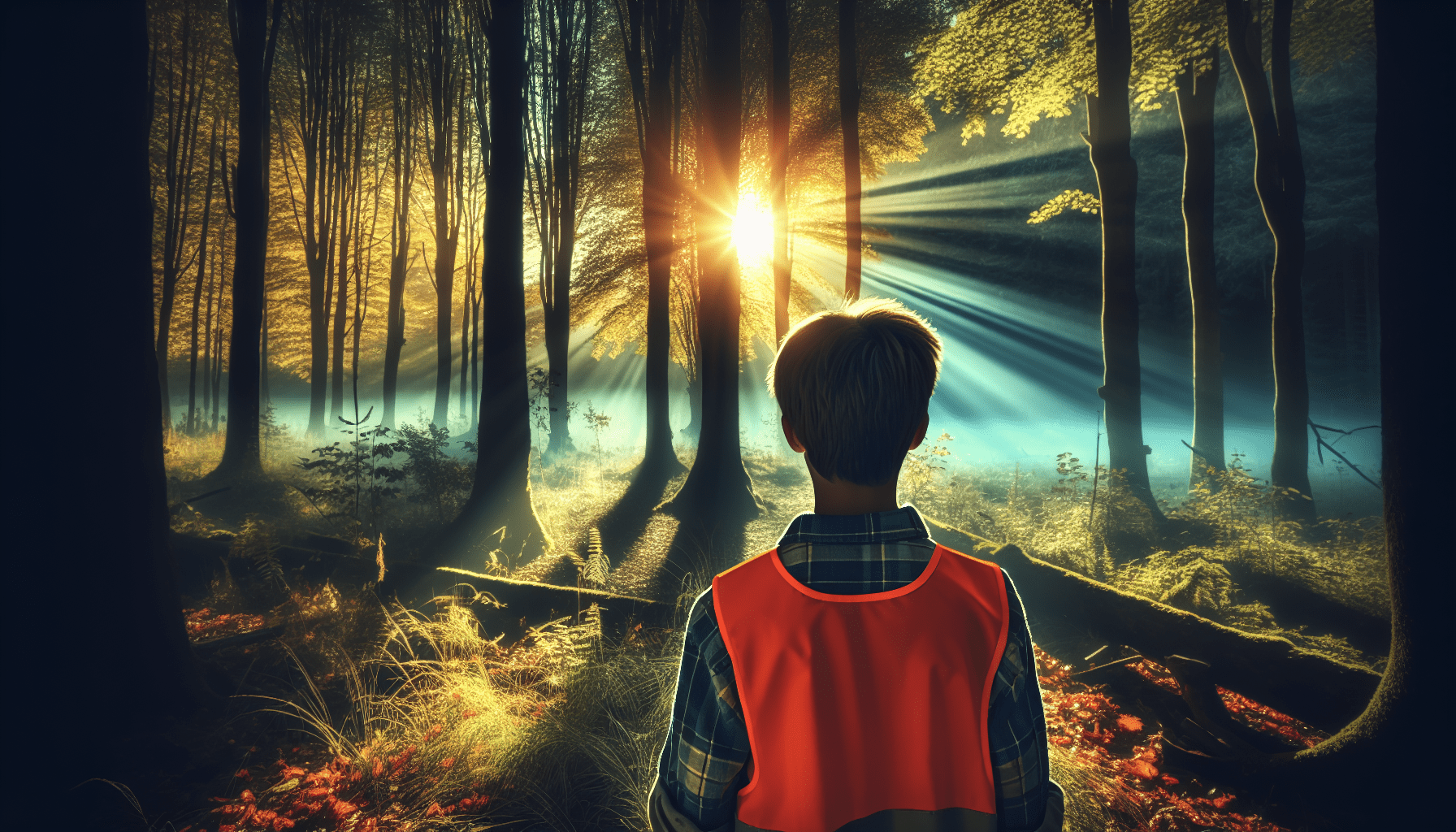Have you ever wondered how you could ensure your kids’ safety during hunting season? As hunting season arrives, it also brings potential hazards, especially for those who may not be familiar with outdoor activities. Teaching kids the value of safety is crucial to ensure they can enjoy nature without unnecessary risks. Let’s explore how you can prepare your children to be safe while experiencing the great outdoors.
Understanding the Hunting Environment
Before you can teach your kids about safe practices, you need to understand the environment in which hunts take place. The great outdoors is a vast place, teeming with life and activity, especially during hunting season. Hunters, wildlife, and other nature enthusiasts share this space, making it important for everyone to respect one another’s activities.
Wildlife and Hunters: A Vibrant Landscape
The woods are full of life during hunting season. Animals are on the move, and hunters seek their prize. Understanding this vibrant interaction is key. Hunters often wear camouflage and blend into the surroundings, which can make it difficult to spot them from a distance. Your child might need to be extra cautious as they explore.
The Role of Weather Conditions
Weather can change rapidly, affecting visibility and safety conditions in the wilderness. Teach your kids to recognize weather patterns and understand how it affects their outdoor plans. Knowing when it isn’t safe to be outside is part of staying safe.
Education: The Cornerstone of Safety
Education is your most powerful tool when it comes to safety. Equip your kids with knowledge and skills to ensure they can confidently navigate the environment.
Basics of Hunting Safety and Practices
Start by introducing your child to the basic concepts of hunting safety. Explain why bright, reflective clothing is necessary and teach them to recognize posted signs that indicate a hunting area. Simple rules such as “stop, look, and listen” can make all the difference.
Understanding Safety Gear
Every hunter and nature enthusiast should understand the importance of safety gear. High-visibility clothing is essential so that hunters can easily spot your children in heavily wooded areas or during low-light conditions. Make sure your kids know what gear to wear and why.
| Safety Gear | Explanation |
|---|---|
| High-Visibility Clothing | Makes it easy to spot individuals in the woods. |
| Whistle | For signaling if they are lost or in danger. |
| Map and Compass | Provides orientation basics if they stray from group. |

Communication is Key
Communication goes a long way in ensuring safety during hunting season. Establish clear communication rules for children.
Establish a Communication Plan
Create a simple communication plan and ensure your child knows it by heart. Discuss designated meeting points, and establish check-in times so you know their whereabouts at any given time.
Teach Them to Use Technology Wisely
In today’s world, technology can be a great ally. Ensure your child knows how to use a cellphone or GPS device to make calls or send their location if needed. Reinforce that these gadgets are tools for safety, not for distraction.
The Importance of Supervision
Young children require constant supervision, especially in areas where hunting is allowed.
Always Have an Adult Present
It’s a good practice to always have an adult accompany kids. This presence helps guide their actions, ensures they follow safety protocols, and provides immediate assistance if an issue arises.

Green Line Arms: Your Partner in Safety
You have a resource in Green Line Arms, where the emphasis is on responsible firearms handling and education.
Visit Green Line Arms for Training and Resources
Green Line Arms offers courses that cover firearm safety and best practices. Advanced simulations make learning informative and fun. They provide training for all skill levels, ensuring a comprehensive understanding of safety measures.
By visiting Green Line Arms, you gain access to expertise and resources that are crucial for teaching kids how to be safe in a hunting environment. From expert advice to hands-on experiences, they can assist you in making safety a priority.
First Aid Training: Be Prepared
Preparation should also include basic first aid training. It never hurts to know the fundamentals of responding to minor injuries or mishaps.
Teach Basic First Aid Skills
Teach children about simple first aid techniques, such as how to clean a cut and apply a bandage. These skills can minimize anxiety and bolster confidence in handling minor injuries.
First Responder Medical Kit
Having a well-equipped first aid kit is essential. Basic supplies should include bandages, antiseptic wipes, and pain relievers. Green Line Arms can guide you on building a comprehensive first-aid kit suited for outdoor adventures.
Building Awareness: Staying Informed and Safe
Being aware of your surroundings is a skill that will serve kids well beyond hunting season.
Teaching Situational Awareness
Teach your child to always be aware of their surroundings. Encourage them to observe landmarks, hear the sounds around them, and notice changes in their environment. This awareness is crucial for safety and can be quite rewarding.
Understanding Wildlife Behavior
Educate your children about local wildlife and their behaviors, helping them understand what to expect and how to safely observe animals from a distance. Respect and awareness are key to avoiding unsafe situations.
Confidence Through Practice
Practicing safety drills and outdoor skills builds confidence in kids. Run through different scenarios and ask them how they’d respond, ensuring they understand safe and proper actions to take.
Role-Playing Scenarios
Perform role-playing exercises to reinforce safety lessons. You might simulate getting lost or encountering a hunter to let them safely experience the right reactions in real scenarios.
Build Problem-Solving Skills
Encourage your children to think critically and solve problems effectively. These skills will help them remain calm during unexpected situations.
Making Safety Fun
Safety doesn’t have to be a dry topic. Make learning enjoyable and engaging for kids to foster a genuine interest in staying safe.
Educational Games and Activities
Incorporate games that develop important skills, like organizing a scavenger hunt that also teaches them about compass reading and wildlife identification.
Celebrate Safety Successes
Praise your children when they demonstrate safe practices. Positive reinforcement creates an encouraging learning environment and instills good habits.
Conclusion
As you guide your children through learning the ins and outs of staying safe during hunting season, consider these practical steps and resources at hand. Education, communication, and vigilance are key factors in ensuring that their forays into the wilderness are both enjoyable and secure. When you’re ready to deepen their safety understanding, Green Line Arms offers plentiful knowledge and resources to keep safety at the forefront. Remember, the goal is not just about keeping away from harm, but also about nurturing a lasting respect for nature and its complexities.




